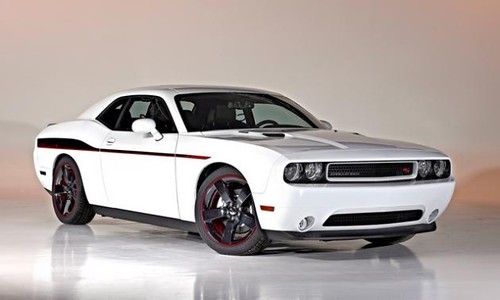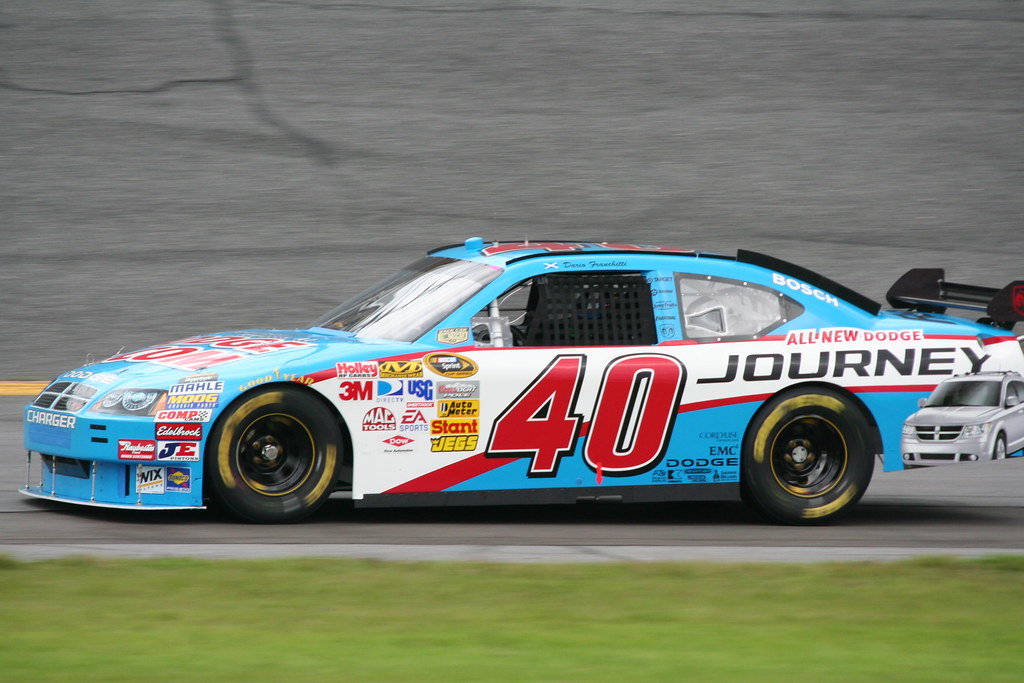
Minivans, while perhaps not sparking the same enthusiasm as sports cars or rugged SUVs, are undeniably indispensable for millions of families. They serve as the quiet workhorses of the road—ferrying kids to school, hauling groceries, and enduring countless road trips. But with such heavy use comes an important question: which minivans are truly built to last, and which ones break down before they’ve earned their keep?
In an era where maintenance costs and vehicle downtime have become critical concerns for today’s cost-conscious families, reliability and longevity matter more than ever. Our goal is to separate dependable vans from the lemons, drawing on real-world reliability data, owner satisfaction scores, and long-term service records. Whether you’re looking to invest in a new minivan that will last you 200,000+ miles or want to avoid a purchase you’ll regret, this guide is designed to help you make smarter choices. We will first spotlight the minivans that shine when it comes to reliability and lifespan, offering peace of mind to families who rely on their vehicles day in and day out.
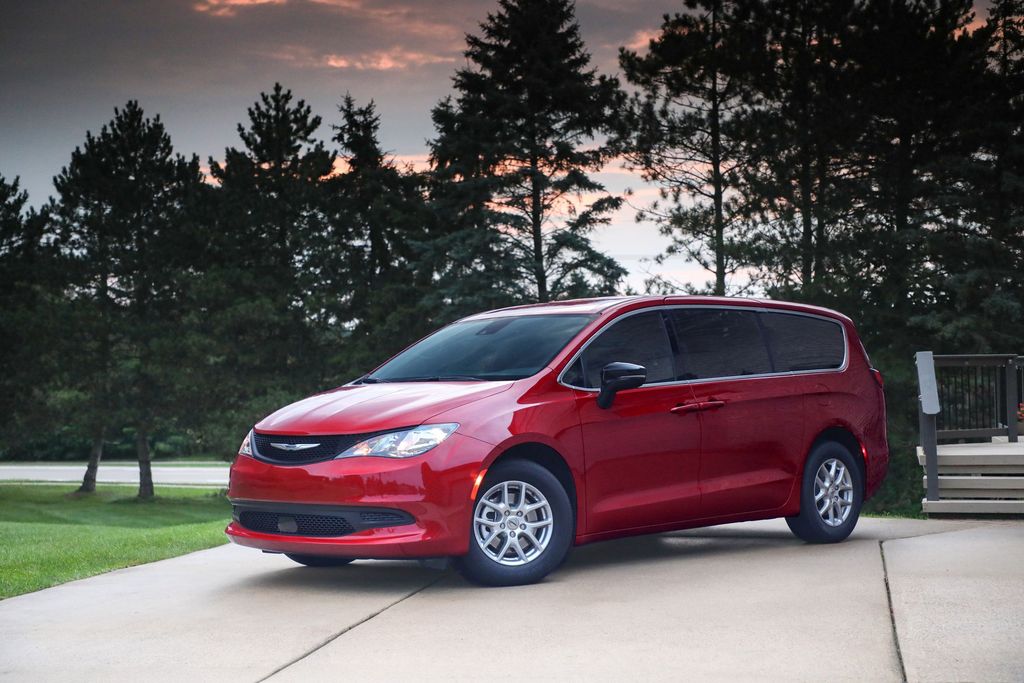
1. **Toyota Sienna**
If there’s one minivan that consistently tops reliability charts and wears high mileage like a badge of honor, it’s the Toyota Sienna. Known for its bulletproof engineering, this van has become a poster child for decade-long dependability, often crossing the 250,000-mile mark with ease. Toyota’s reputation for reliability is well-earned, and the Sienna exemplifies that standard with every generation. Its V6 engine is known to pass 200,000 miles, and many vans keep original parts well past 100K, offering a smooth drive even after years of use.
At the core of its longevity is the 3.5-liter V6 engine, a workhorse that’s both powerful and refined. Paired with a smooth-shifting automatic transmission and a well-tuned suspension, the Sienna manages to stay robust even under the stress of constant family hauling. Owners regularly report minimal issues beyond routine maintenance, with brake jobs, oil changes, and tire rotations being the primary upkeep tasks for the first 150,000 miles. Furthermore, its upkeep stays low compared to other vans in its class, with easy-to-find parts and simple service needs, resulting in fewer major fixes reported after 100K.
Unlike some competitors, the Sienna also offers available all-wheel drive, making it a great year-round option in snow-prone regions and helping to keep the ride safe. Inside, it’s built with family use in mind: durable materials, thoughtful layout, and tech that keeps kids entertained without being overly complex or glitch-prone. The interior wears well over time, and features like power sliding doors and rear-seat entertainment systems are known to hold up with minimal issues. Even an older Sienna is built for real life, with big space for bags, kids, or tools, strong AC and heat systems, and a safe ride with lots of family-friendly features.
What sets the Sienna apart is its predictable ownership experience. RepairPal ranks it highly for low repair frequency, and resale values stay strong even after a decade on the road. It’s not just a van you buy—it’s one you can rely on through multiple stages of family life. It also holds its value better than many rivals and still feels modern inside, often being passed down through families. Simply put, if you want a minivan that won’t let you down after ten years, the Toyota Sienna is a near-perfect pick.
Car Model Information: 2023 Toyota Sienna XLE 7 Passenger
Name: Toyota Sienna
Caption: 2021 Toyota Sienna XLE (AXLH40)
Manufacturer: Toyota
Aka: Toyota Granvia (China, 2022–present)
Production: August 1997 – present
ModelYears: 1998–present
Class: Minivan
BodyStyle: minivan
Predecessor: unbulleted list
Categories: 2000s cars, 2010s cars, 2020s cars, All-wheel-drive vehicles, All articles with dead external links
Summary: The Toyota Sienna is a minivan manufactured and marketed by Toyota primarily for the North American market. It is named for the Italian city of Siena, in the region of Tuscany. It replaced the first generation Previa van in 1997 (for the 1998 model year) with a more conventional front-wheel drive layout and shares a heavily revised platform with the Camry. Both the Previa and original Sienna were smaller than the other minivans they competed against, but a redesign in 2003 (for the 2004 model year) increased the dimensions to match those of its competitors.
It was redesigned again in 2010 (for the 2011 model year). The third generation Sienna went on sale in the United States in February 2010 and is the first Sienna to ever receive a “Top Safety Pick” award from the Insurance Institute for Highway Safety. A 2020 redesign (for the 2021 model year) saw the Sienna becoming a hybrid vehicle for its fourth generation. While previous generations of the Sienna were exported to select Asian and European markets, the fourth generation is the first to be produced outside of the United States as Chinese production commenced in July 2021 by two Toyota joint ventures. In China, it is also marketed as the Toyota Granvia.
Following the discontinuation of General Motors’s all-wheel drive minivans in 2006, the Sienna was the only minivan in its class offered with AWD in North America until the 2021 Chrysler Pacifica was introduced with an AWD option in 2020.
The Sienna is not available in Japan and Australia as it is not produced in a right-hand drive configuration, and the segment in these countries is occupied by the Alphard/Vellfire and the HiAce/Granvia respectively.
As of the fourth generation, introduced in 2020, the Sienna is built on Toyota’s TNGA-K platform, which it shares with most of Toyota’s other large MPVs and crossovers.
Get more information about: Toyota Sienna
Buying a high-performing used car >>>
Brand: Toyota Model: Sienna
Price: $44,981 Mileage: 58,533 mi.
Read more about: Fueling Family Adventures: Exploring 15 Top Minivans for Big Families on a Budget, with a Spotlight on 32+ MPG Contenders

2. **Honda Odyssey**
The Honda Odyssey is another legendary name in the minivan segment, and it’s easy to see why. This van doesn’t just survive for a decade—it thrives, delivering solid performance, smart features, and long-term reliability that has won the trust of countless families. It’s often found on the road well past 200,000 miles, and many owners proudly report driving the same Odyssey for over 15 years with minimal trouble. With the right care, many Odysseys pass 200,000 miles, with its build and design made to last.
One of the Odyssey’s key strengths is its refined V6 engine, known for being both fuel-efficient and long-lasting. While earlier models had some hiccups with transmission issues, especially in the early 2000s, Honda made steady improvements, and models from 2011 onward have significantly better durability. The i-VTEC engine and updated 6- to 10-speed transmissions in newer versions are particularly smooth and dependable. Key reasons for its longevity include a strong V6 engine with solid fuel use and a quiet, steady ride that holds up over the years.
Inside, the Odyssey’s well-designed cabin features high-quality materials that stand up to wear, even after years of juice spills, pet hair, and muddy cleats. Its Magic Slide seats and flat cargo floor add functionality and space flexibility, while Honda’s infotainment and safety tech systems—like Honda Sensing—work reliably over time with few bugs or breakdowns. Its roomy, well-planned interior works for both kids and cargo, and it has useful tech, even in older models.
Maintenance costs for the Odyssey are generally affordable, with timing belt replacements and brake servicing among the bigger-ticket items over 100,000 miles. But it’s rare for these vans to need major engine or electrical repairs before reaching the 200,000-mile threshold. Honda also supports the Odyssey with a robust parts network and strong dealership service reputation, further reinforcing its long-term value. It’s also easy to drive and park, great for loading kids, gear, or groceries, and its cooling system keeps the cabin comfortable in hot weather, making it a good fit for local families.
Car Model Information: 2019 Honda Odyssey EX-L
Categories: All set index articles, Articles with short description, Honda ATVs, Honda vehicles, Set index articles on cars
Summary: Honda Odyssey can refer to three motor vehicles manufactured by Honda:
Honda Odyssey (ATV), an all-terrain vehicle (1977—1989)
Honda Odyssey (minivan), a brand of two different Honda minivan models for different markets
Honda Odyssey (international), sold in Japan and most other parts of the world
Honda Odyssey (North America), sold primarily in North America and certain other markets
Get more information about: Honda Odyssey
Buying a high-performing used car >>>
Brand: Honda Model: Odyssey
Price: $27,964 Mileage: 48,005 mi.
Read more about: Unveiling the Safest Luxury Sedans of 2025: A Deep Dive into 13 Models with Standard Advanced Safety Features
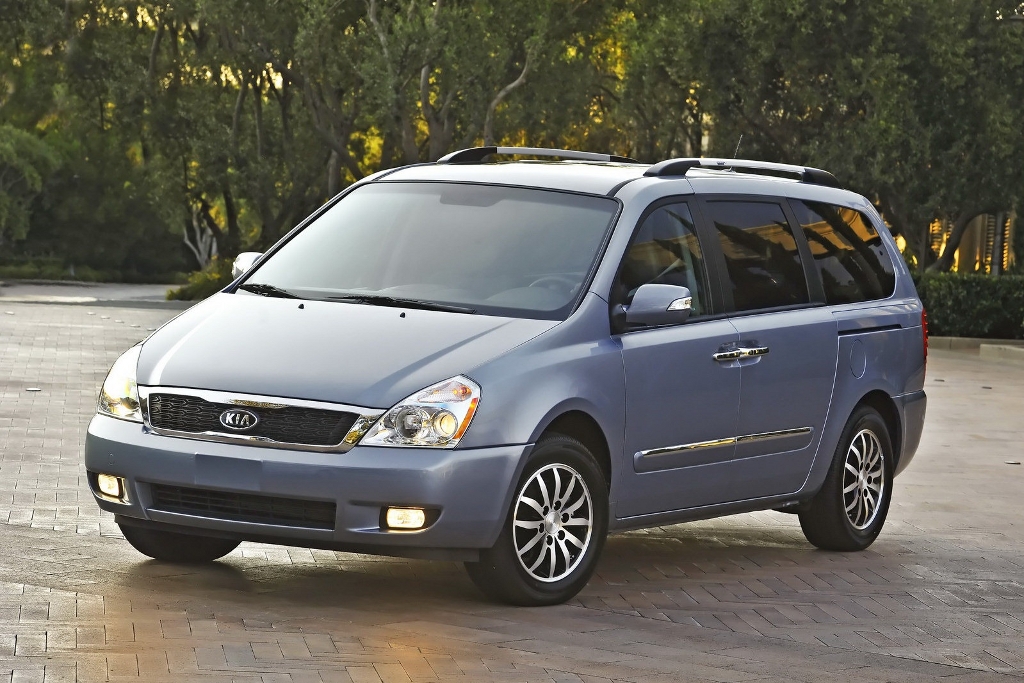
3. **Kia Sedona (2015–2021)**
The Kia Sedona, particularly from the 2015 to 2021 model years, represents one of the most surprising success stories in the minivan world. Once considered a budget option, the Sedona has grown into a respectable, long-lasting family hauler with a reputation for durability that now rivals more established names. For families seeking a decade-long relationship with their vehicle without breaking the bank, the Sedona is a quietly reliable contender, offering peace of mind and enduring value.
The third-generation Sedona brought a major leap in quality and refinement. Its 3.3-liter V6 engine delivers smooth, reliable power and has proven to be low-stress in real-world use. Combined with Kia’s continuously improving build quality and design maturity, the Sedona shed its economy-car feel and embraced a more upscale and durable persona. What helps the Sedona last is its simple yet effective mechanical layout, focusing on functional reliability.
Key components—engine, transmission, suspension—are easy to service and tend to age well with routine maintenance, minimizing unexpected repair costs. Kia’s 5-year/60,000-mile basic and 10-year/100,000-mile powertrain warranty is one of the strongest in the business, offering owners peace of mind during the first crucial years of ownership. But even after the warranty expires, Sedonas tend to hold up well if cared for properly. Major repairs are relatively rare before the 150,000-mile mark, and interior durability is solid thanks to quality materials and intuitive design.
The Sedona may not have quite the brand prestige of a Honda or Toyota, but it’s earned real-world respect through dependable performance and long-term comfort. Plus, it’s often priced lower on the used market, making it an excellent value for families who want reliable transportation that doesn’t come with a luxury-level price tag. If you’re looking for a dependable, straightforward minivan that will go the distance, the Kia Sedona quietly delivers exactly that—year after year.
Car Model Information: 2016 Kia Sedona LX
Name: Kia Carnival
Caption: Kia Carnival (KA4)
Manufacturer: Kia
Aka: Kia Sedona (1999–2021)
Production: January 1998–present
ModelYears: 2002–present (North America)
Class: Minivan
BodyStyle: minivan
Layout: Front-engine, front-wheel-drive layout
Categories: 2000s cars, 2010s cars, All articles with dead external links, All articles with unsourced statements, All articles with vague or ambiguous time
Summary: The Kia Carnival (Korean: 기아 카니발) is a minivan manufactured by Kia since 1998. It is marketed globally under various nameplates, prominently as the Kia Sedona.
The first-generation Carnival was introduced in January 1998, and was marketed in a single, short wheelbase version. Second-generation models were marketed (2006–2014) in short and long wheelbase variants. A rebadged variant of the second generation was offered in North America as the Hyundai Entourage (2007–2009). Beginning in 2010, the second-generation model received updated equipment, including Kia’s corporate Tiger Nose grille, as introduced by its then new design chief, Peter Schreyer. Kia introduced its third-generation minivan in 2014, solely in a long wheelbase format. The fourth generation was introduced in 2020, when Kia also began using the Carnival nameplate worldwide.
Get more information about: Kia Carnival
Buying a high-performing used car >>>
Brand: Kia Model: Sedona
Price: $8,644 Mileage: 117,651 mi.
Read more about: A Consumer’s Guide to Minivan Reliability – Uncovering Long-Lasting Performers and Frequent Repair Pitfalls After 100,000 Miles
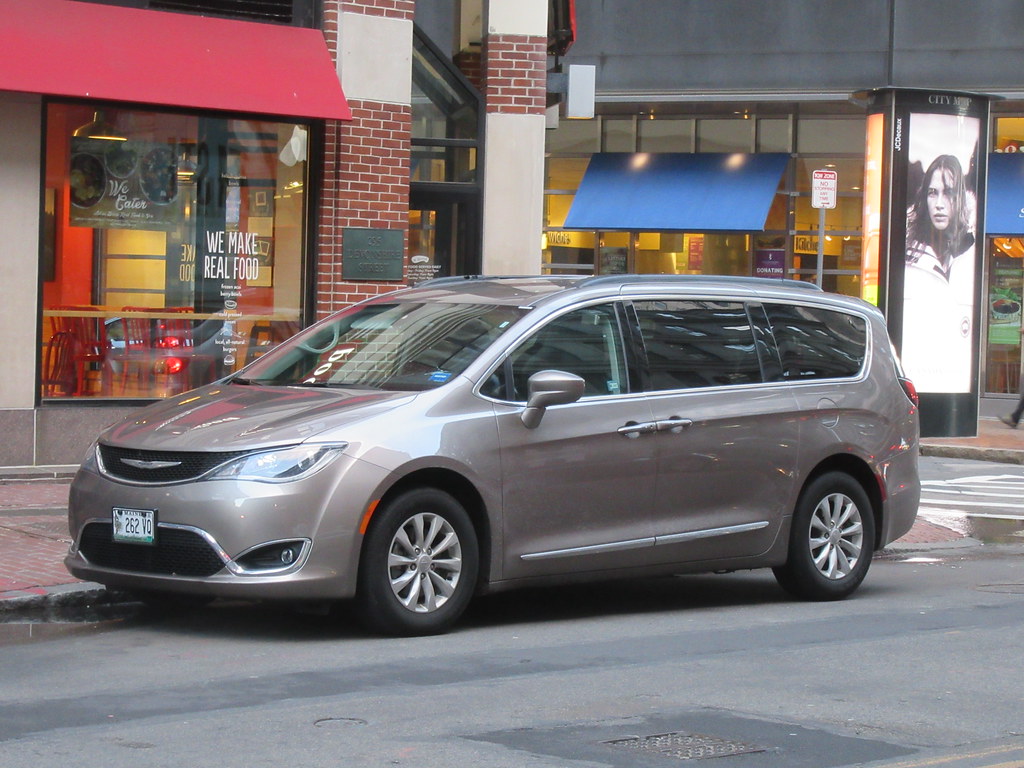
4. **Chrysler Pacifica (Gas Models, 2017–Present)**
The Chrysler Pacifica may surprise some readers by landing on the long-lifespan list, especially given the brand’s mixed reliability reputation. However, the gasoline-powered versions of the Pacifica—particularly those from 2018 onward—have shown notable improvements in engineering and build quality, allowing them to achieve solid longevity when properly maintained. This evolution marks a positive shift for Chrysler in the minivan segment. Even older Pacifica models still feel fresh, with a clean and quiet inside, soft but strong seats, and a ride that feels more like a car than a van.
Under the hood, the Pacifica features the 3.6-liter Pentastar V6 engine, an engine that has earned praise across multiple Chrysler, Dodge, and Jeep models for its reliability and longevity. When paired with the 9-speed automatic transmission, the Pacifica delivers a refined and smooth drive experience that holds up well over time. Though earlier models had some transmission tuning quirks, software updates and design refinements addressed most of those by 2019, further enhancing its long-term appeal. It offers strong engine options that last and a quiet cabin that blocks out road noise.
What makes the Pacifica stand out is its blend of innovation and practicality. Features like Stow ‘n Go seating, where the second and third rows fold flat into the floor, are not only convenient but built to last. Interior wear points—such as seat materials, trim, and controls—tend to remain intact even after years of daily abuse from kids, pets, and cargo, proving its resilience. This van brings comfort to the next level, even in older models, with more features than most expect, including built-in tech for music, maps, and movies.
Real-world owners often report that with regular oil changes, transmission services, and attention to factory service intervals, the Pacifica can easily cross the 200,000-mile mark. Online forums and owner surveys back this up, showing strong long-term satisfaction rates for the gas-powered models. It’s worth noting that the Pacifica Hybrid, while innovative, has had more reported issues with its plug-in hybrid system, making the standard gas version the better bet for long-term peace of mind. The gas Pacifica also benefits from widespread parts availability and service networks, reducing the cost and hassle of long-term upkeep.
Car Model Information: 2021 Chrysler Pacifica Touring L
Categories: All set index articles, Articles with short description, Chrysler vehicles, Set index articles on cars, Short description is different from Wikidata
Summary: Chrysler Pacifica is a nameplate used by Chrysler for a variety of vehicles.
The name was first used on a luxury minivan concept vehicle in 1999, and later a crossover concept in 2002.
From 2004 to 2008, it was used on a mid-size crossover, and since the 2017 model year, it has been used as the Town & Country minivan’s replacement.
Vehicles using the nameplate are:
Chrysler Pacifica concept (1999), concept minivan
Chrysler Pacifica concept (2002), concept crossover
Chrysler Pacifica (crossover) (2004–2008), production version of the 2002 concept
Chrysler Pacifica (minivan) (2017–present), Chrysler Town & Country replacement
Get more information about: Chrysler Pacifica
Buying a high-performing used car >>>
Brand: Chrysler Model: Pacifica
Price: $26,278 Mileage: 29,396 mi.
Read more about: A Consumer’s Guide to Minivan Reliability – Uncovering Long-Lasting Performers and Frequent Repair Pitfalls After 100,000 Miles
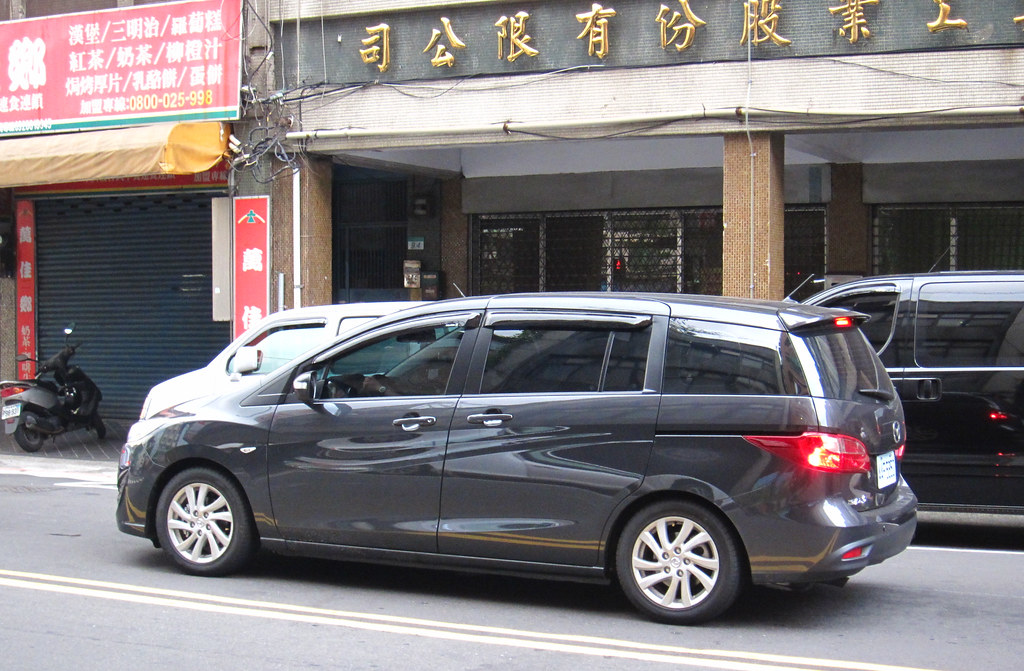
5. **Mazda5 (2012–2015)**
Though technically a compact minivan—and no longer in production—the Mazda5 earns a place on this list for its exceptional long-term durability and owner satisfaction, especially for those who prioritize efficiency and simplicity over size. Often overlooked due to its smaller footprint and lack of marketing hype, the Mazda5 is a hidden gem for buyers who want a reliable, low-maintenance vehicle that’s more maneuverable than traditional minivans yet just as functional for small families.
Under the hood, the Mazda5 features a 2.5-liter inline-4 engine paired with a manual or automatic transmission, depending on the model year and trim. This setup offers a key advantage: mechanical simplicity. There’s no turbocharging, no hybrid system, no complex all-wheel-drive hardware—just proven, dependable parts that hold up exceptionally well with routine maintenance. Owners frequently report reaching the 200,000-mile mark with very few unscheduled repairs. Common issues, like sway bar bushings or brake wear, are inexpensive to address.
Mazda’s focus on nimble driving dynamics also means the Mazda5 avoids the floaty handling typical of larger vans, making it a popular choice for drivers who want a car-like feel with van-like practicality. Inside, the Mazda5 offers three rows of seating in a compact footprint, plus sliding rear doors—a major plus in tight parking spots. While its cargo space isn’t on par with full-size vans like the Sienna or Odyssey, it provides more than enough room for daily commuting, school runs, and grocery hauls. The interior is also remarkably resilient, with firm materials that age gracefully even after years of kid-induced wear and tear.
Although the Mazda5 was discontinued after 2015, used models continue to be sought after for their exceptional longevity, low cost of ownership, and ease of service. For urban families or those who don’t need the bulk of a full-size van, the Mazda5 remains one of the most durable and overlooked decade-long performers. It’s a smart choice for buyers prioritizing a reliable, low-maintenance vehicle that excels in maneuverability and simplicity.
Not all minivans are created equal, and while some prove to be durable family companions for well over a decade, others can quickly become burdens, plagued by frequent repairs, frustrating breakdowns, and costly maintenance. For families on a budget, the promise of a roomy, feature-packed van can be tempting, but in some cases, those perks are often offset by poor long-term reliability. This section is dedicated to minivans that have gained a reputation for visiting the repair shop more often than expected, sometimes even before hitting the 100,000-mile mark.
These models may have debuted with exciting features or aggressive price tags, but over time, they’ve revealed their shortcomings, ranging from fragile transmissions to persistent electrical issues or hard-to-source parts. We’ve compiled this list based on data from owner complaints, reliability rankings from platforms like Consumer Reports and J.D. Power, and mechanic-reported issues that tend to surface repeatedly in certain models. These are the vans that, while they may offer value on paper, often end up draining wallets and patience in the long run. If you’re in the market for a minivan, or looking to offload one you’re having trouble with, this list serves as a crucial heads-up.
Car Model Information: 2014 Mazda Mazda5 Sport
Name: Mazda Premacy
Manufacturer: Mazda
Aka: Mazda5 (2004–2018)
Production: 1999–2018
Class: Minivan
Predecessor: Mazda MPV
Categories: 2000s cars, 2010s cars, All Wikipedia articles written in American English, All articles with unsourced statements, Articles containing Japanese-language text
Summary: The Mazda Premacy (Japanese: マツダ・プレマシー, Hepburn: Matsuda Puremashī) is a passenger minivan that was built by the Japanese manufacturer Mazda from 1999 to 2018.
The first generation Premacy was built in Japan and exported to Europe and Asia. A rebadged version was sold by Ford in a few Asian markets (including Japan) as the Ford Ixion or Ixion MAV.
The second generation onward was sold outside Japan as the Mazda5. Ford Lio Ho in Taiwan, which assembles Mazda5 for the local market, adapted a re-badged version as the Ford i-Max from 2007 until 2011.
The first generation Premacy was a two- or three-row, five- or seven-passenger vehicle, while the second generation adds a third row of seats for up to six passengers in North American form, and seven passengers outside the United States. Both generations feature near-flat floors, folding or removable second row, and fold-flat rear seats.
Get more information about: Mazda Premacy
Buying a high-performing used car >>>
Brand: Mazda Model: Mazda5
Price: $8,495 Mileage: 102,500 mi.
Read more about: A Consumer’s Guide to Minivan Reliability – Uncovering Long-Lasting Performers and Frequent Repair Pitfalls After 100,000 Miles
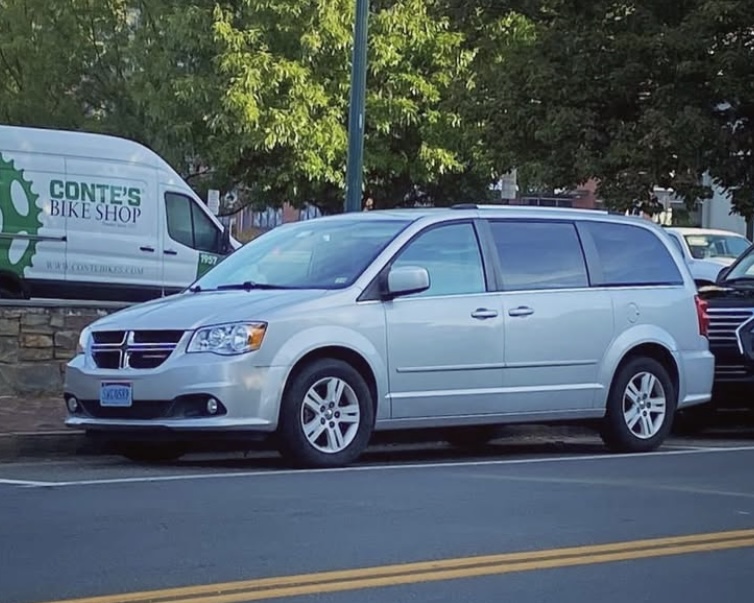
6. **Dodge Grand Caravan (2008–2020)**
The Dodge Grand Caravan was once America’s best-selling minivan, thanks to aggressive pricing and its clever Stow ‘n Go seating system. However, behind its practical layout and family-friendly design lies a history of persistent mechanical problems, especially in models produced between 2008 and 2020. While the Caravan is ubiquitous on the road, many owners can attest that it often earns its mileage through repeated trips to mechanics.
One of the most common issues stems from the 6-speed automatic transmission, which is known for premature failure, rough shifting, and torque converter problems. Many owners report the need for a full rebuild or replacement before even reaching 100,000 miles. These repairs aren’t cheap and can total thousands, even with rebuilt parts. The electronic transmission control module has also been a frequent failure point.
Then there’s the electrical system—arguably one of the Grand Caravan’s most frustrating weaknesses. Power sliding doors and liftgates often fail, key fobs lose functionality, and dashboard warning lights are notorious for flickering on with no clear resolution. TIPMs (Totally Integrated Power Modules), which act as the brain of the vehicle’s electrical system, are a particular Achilles’ heel and are expensive to diagnose and replace.
Beyond that, interior materials degrade quickly, especially in high-use family environments. Cracking dashboards, broken trim pieces, and sagging headliners are common complaints among owners. Suspension components like sway bars and control arms also wear out sooner than expected, contributing to an uneven ride and handling issues that necessitate early replacement. For families looking to minimize downtime and maintenance expenses, this is a minivan that often costs more in the long run than it initially seems.
Car Model Information: 2020 Dodge Grand Caravan
Caption: 2011 Dodge Grand Caravan Mainstreet
Name: Dodge Grand Caravan
Manufacturer: Chrysler Corporation,Daimler AG,Chrysler LLC,Chrysler Group LLC,FCA US LLC
Class: Minivan
Layout: FF layout,F4 layout
Production: November 2, 1983 –August 21, 2020
ModelYears: 1984–2020
Related: Plymouth Voyager,Chrysler Town & Country (minivan),Dodge Mini Ram,Chrysler Voyager,Volkswagen Routan
Assembly: Windsor, Ontario,Fenton, Missouri,Fenton, Missouri,Fuzhou
Successor: Dodge Journey,Chrysler Voyager
Categories: All-wheel-drive vehicles, All articles with unsourced statements, Articles with short description, Articles with unsourced statements from December 2017, Articles with unsourced statements from May 2009
Summary: The Dodge Caravan is a series of minivans manufactured by Chrysler from the 1984 through 2020 model years. The Dodge version of the Chrysler minivans, was marketed as both a passenger van and a cargo van (the only version of the model line offered in the latter configuration). For 1987, the model line was joined by the long-wheelbase Dodge Grand Caravan. Produced in five generations across 36 model years, the Dodge Caravan is the second longest-lived Dodge nameplate (exceeded only by the Dodge Charger). Initially marketed as the Dodge counterpart of the Plymouth Voyager, the Caravan was later slotted between the Voyager and the Chrysler Town & Country. Following the demise of Plymouth, the model line became the lowest-price Chrysler minivan, ultimately slotted below the Chrysler Pacifica. Sold primarily in the United States and Canada, the Dodge Caravan was also marketed in Europe and other international markets under the Chrysler brand (as the Chrysler Voyager or Chrysler Caravan). From 2008 onward, Dodge marketed the model line only as the Grand Caravan; Ram Trucks sold a cargo-only version of the model line as the Ram C/V Tradesman. The model line was also rebranded as the Volkswagen Routan from 2009 through 2014. After the 2020 model year, the Dodge Grand Caravan was discontinued, ending production on August 21, 2020. For 2021 production, the Grand Caravan nameplate was moved to Chrysler, which used it for a Canadian-market version of the Chrysler Pacifica (in the United States, the exact vehicle was marketed as the Chrysler Voyager). For its entire production run, the Dodge Caravan/Grand Caravan was manufactured by Chrysler Canada (now Stellantis Canada) at its Windsor Assembly facility (Windsor, Ontario). From 1987 until 2007, the model line was also manufactured by Chrysler at its Saint Louis Assembly facility (Fenton, Missouri). Since their introduction in late 1983, over 14.6 million Chrysler minivans have been sold worldwide (including export versions and versions sold through rebranding).
Get more information about: Dodge Caravan
Buying a high-performing used car >>>
Brand: Dodge Model: Grand Caravan
Price: $21,999 Mileage: 44,961 mi.
Read more about: A Consumer’s Guide to Minivan Reliability – Uncovering Long-Lasting Performers and Frequent Repair Pitfalls After 100,000 Miles
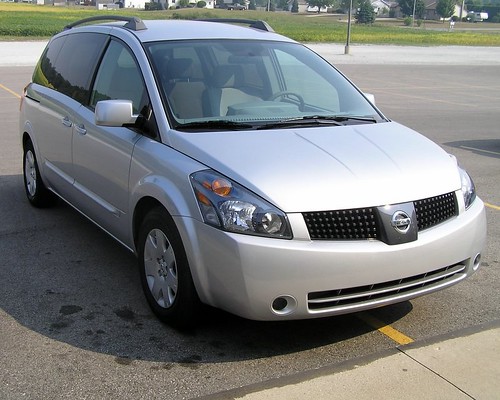
7. **Nissan Quest (2011–2017)**
The fourth-generation Nissan Quest, sold from 2011 to 2017, looked promising on paper. It featured a distinctive design, a comfortable and upscale interior, and was powered by Nissan’s tried-and-true 3.5-liter V6 engine. However, while the engine itself is relatively dependable, the Quest’s Achilles’ heel is its continuously variable transmission (CVT), a system that has plagued many Nissan vehicles and earned this minivan a spot on the frequent repair list.
The CVT issues are by far the most commonly reported problem for the Nissan Quest. Owners often experience jerky acceleration, delayed throttle response, shuddering, and even complete transmission failure before reaching 100,000 miles. These problems are not only common but also very costly to fix, with replacement CVTs running upward of $4,000. Even after expensive repairs or replacements, repeat failures are not unheard of, leaving owners in a frustrating cycle of breakdowns.
Beyond the drivetrain, the Quest suffers from electrical gremlins and sensor failures. Malfunctioning power doors, faulty airbag sensors, and climate control glitches are frequently reported by owners. The cabin, while plush at first glance, tends to show wear more quickly than rivals, with creaky panels and prematurely aging upholstery detracting from its initial appeal over time.
Parts availability can also be a significant issue for the Nissan Quest. Because the model never sold in high volumes compared to competitors, certain replacement components, especially interior parts and specific transmission components, can be hard to source or expensive to obtain. This scarcity drives up both repair time and cost when compared to more mainstream competitors, making long-term ownership more difficult.
Despite a smooth ride and spacious interior, the Quest’s long-term ownership experience is notably marred by frequent shop visits, steep repair costs, and persistent reliability concerns. While its unique look and comfortable cabin may attract some buyers on the used market, those who prioritize durability and lower maintenance costs should steer clear of this particular generation of the Nissan Quest. In short, it often becomes more trouble than it’s worth.
Car Model Information: 2013 Nissan Quest S
Name: Nissan Quest
Caption: 2015 Nissan Quest SV (RE52)
Manufacturer: Ford Motor Company
Production: 1992–2016
ModelYears: 1993–2002,2004–2009,2011–2017
Class: Minivan
Layout: Front-engine, front-wheel-drive layout
Predecessor: Nissan Largo,Nissan Serena
Successor: Nissan Elgrand
Categories: 2000s cars, 2010s cars, All articles with dead external links, Articles with dead external links from February 2018, Articles with dead external links from September 2015
Summary: The Nissan Quest is a minivan manufactured and marketed by Nissan for model years 1993–2017 over four generations.
The first two generations (internally designated V40 and V41) of the Quest were short-wheelbase models co-developed and manufactured with Ford, aside its badge engineered Mercury Villager. For model year 2004 and the third generation (V42), Nissan ended its joint venture with Ford, manufacturing the Quest on its own. For model year 2011, the fourth generation (RE52) became a widened variant of the Nissan Elgrand minivan and became manufactured in Japan. For the preceding generations, the Quest loosely shared its chassis and powertrain with the Nissan Maxima.
Following the decline of minivan sales in North America, Nissan ended sales of the Quest after the 2017 model year.
Get more information about: Nissan Quest
Buying a high-performing used car >>>
Brand: Nissan Model: Quest
Price: $8,900 Mileage: 82,980 mi.
Read more about: A Consumer’s Guide to Minivan Reliability – Uncovering Long-Lasting Performers and Frequent Repair Pitfalls After 100,000 Miles
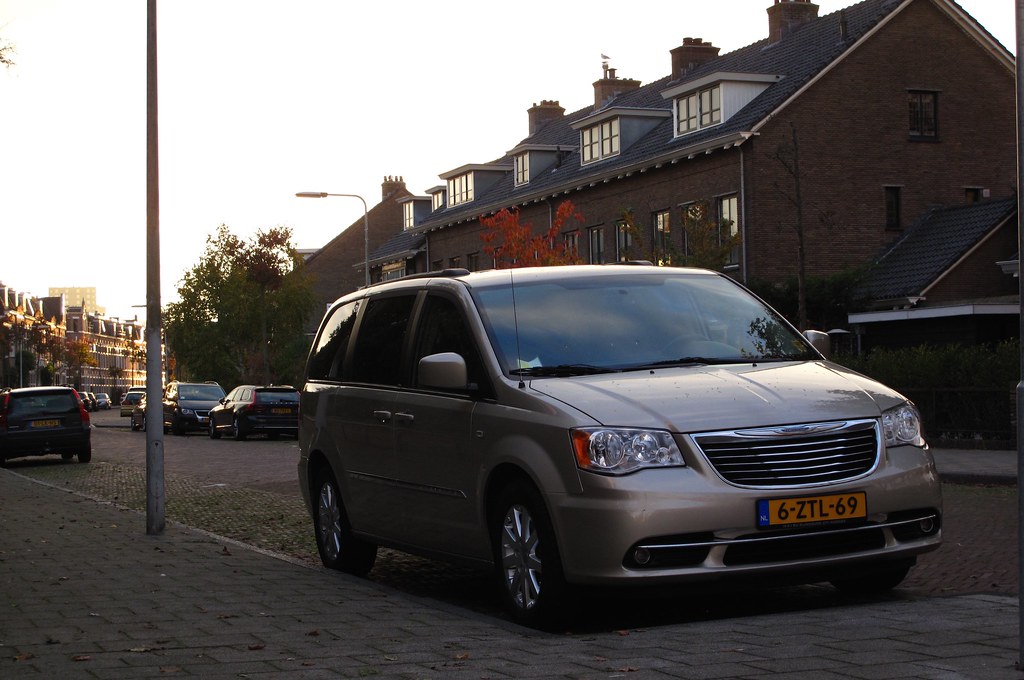
8. **Chrysler Town & Country (2008–2016)**
The Chrysler Town & Country has long been positioned as the more upscale sibling to the Dodge Grand Caravan. With added chrome, luxury touches, and more standard features, it certainly looks the part of a premium minivan. Unfortunately, underneath that veneer lies a host of persistent mechanical and electrical problems that send owners to the repair shop far more often than they’d like, diminishing its premium appeal in the long run.
At the center of many complaints is the 6-speed automatic transmission, which, much like its Dodge counterpart, is known for poor reliability. Hard shifts, slipping gears, and outright transmission failure often occur before 100,000 miles, especially in pre-2013 models. Even when serviced regularly, many units do not make it past the 120,000-mile mark without requiring significant and costly repairs or replacement, a major concern for long-term owners.
In addition to transmission woes, the Town & Country is riddled with electrical system issues. The infamous TIPM (Totally Integrated Power Module) often fails, leading to a range of mysterious and expensive-to-fix problems, including dead batteries, failing lights, power door glitches, and unpredictable starter behavior. These failures are not only frustrating but also difficult to diagnose, meaning shop visits tend to multiply quickly as mechanics try to pinpoint the elusive issues.
Interior quality is another area where the Town & Country falls short. Despite its premium image, materials tend to wear rapidly under daily use. Leather seats crack and fade prematurely, dashboard components rattle or break, and the electronic infotainment systems are prone to malfunction, further adding to owner frustration. Even simple power windows and locks have earned a reputation for premature failure, highlighting underlying quality issues.
Suspension components also wear out early, with control arms, bushings, and struts all commonly requiring replacement before 80,000 miles. Combined with its heavier body and high center of gravity, these issues significantly impact ride quality and handling over time. While the Town & Country initially appeals with its luxury leanings and practical Stow ‘n Go seating, many owners report being trapped in a cycle of frequent repairs and mounting bills, making it a cautionary tale for those prioritizing reliability and peace of mind.
Car Model Information: 2022 Volkswagen Atlas 2.0T SE
Name: Chrysler Town & Country
Manufacturer: Chrysler Corporation
Production: 1989–2016
ModelYears: 1990–2016
Class: Minivan
Predecessor: Chrysler Town & Country (1941–1988)
Successor: Chrysler Pacifica (minivan)
Categories: 1980s cars, 1990s cars, 2000s cars, 2010s cars, All-wheel-drive vehicles
Summary: The Chrysler Town & Country is a minivan manufactured and marketed by Chrysler starting from the 1990 until the 2016 model year. It was the third Chrysler minivan model introduced in North America. The Town & Country adopted its nameplate from the flagship Chrysler station wagon line, adopting its exterior woodgrain trim as a design feature for several generations.
Marketed as the flagship of the Chrysler minivan line, five generations of the Town & Country were slotted above the extended-wheelbase Dodge Grand Caravan and Plymouth Grand Voyager. For 2017, Chrysler retired the nameplate, with sixth-generation Chrysler-division minivans becoming the Chrysler Pacifica. After the 2016 model year, Chrysler marked the sale of its 12 millionth minivan (under all three nameplates). Produced almost continuously for 75 years (except during World War II and 1989), the Town & Country nameplate is the longest-produced Chrysler; its longevity is second only to the Chevrolet Suburban in automotive history.
Chrysler assembled the first three generations of the model line in its Saint Louis Assembly facility (Fenton, Missouri). The fourth and fifth-generation Town & Country were produced by Chrysler Canada by Windsor Assembly (Windsor, Ontario).
Get more information about: Chrysler Town & Country (minivan)
Buying a high-performing used car >>>
Brand: Chrysler Model: Town & Country
Price: $21,999 Mileage: 44,961 mi.
Read more about: A Consumer’s Guide to Minivan Reliability – Uncovering Long-Lasting Performers and Frequent Repair Pitfalls After 100,000 Miles

9. **Chevrolet Uplander (2005–2009)**
The Chevrolet Uplander represented General Motors’ final attempt at capturing a significant share of the minivan market before the brand exited the segment entirely. Unfortunately, the Uplander didn’t go out with a bang; instead, it was plagued by a long list of quality issues, mechanical failures, and frequent breakdowns that collectively make it one of the least reliable minivans of its era. This legacy contributes to its poor reputation in the used market.
One of the biggest complaints centers around the 3.9-liter V6 engine and its associated components, which are notorious for developing problems early in life. Issues such as intake manifold gasket leaks, faulty ignition coils, and inconsistent engine performance frequently appear in service records before the 100,000-mile mark. The Uplander also suffers from transmission issues, including harsh shifting and internal failures that often lead to complete replacements, usually well before other vehicles would experience similar problems.
In addition to its drivetrain faults, the Uplander is consistently plagued by electrical system failures. Owners frequently report power sliding doors that fail to open or close, dashboard gauges that stop functioning correctly, and chronic issues with interior lighting that can be difficult to resolve. The vehicle’s body control module (BCM) and various wiring harnesses are common sources of failure, often requiring time-consuming diagnostics and expensive repairs.
Interior durability is another notable weak point of the Chevrolet Uplander. The cabin was constructed with low-grade plastics and upholstery that tends to deteriorate rapidly with daily family use, showing wear and tear far too quickly. Door handles break, seat mechanisms fail, and trim pieces rattle or even fall off, especially in older models. Furthermore, safety features, including airbags and ABS systems, often earned mixed marks in long-term reliability studies.
While the Uplander may offer a low up-front cost on the used market, its long-term ownership costs can skyrocket dramatically, especially once the van surpasses 75,000 miles. Parts availability can also be spotty, as GM no longer actively supports the model, making repairs more challenging and expensive. For buyers seeking a long-lasting minivan, the Chevrolet Uplander is a vehicle best left in the past, as its frequent shop visits and unreliable systems make it a poor candidate for decade-long family duty.
Car Model Information: 2008 Chevrolet Uplander Cargo
Name: Chevrolet Uplander
Manufacturer: General Motors
Production: June 20, 2004 – September 26, 2008
ModelYears: 2005–2008 (United States),2005–2009 (Canada and Mexico)
Assembly: Doraville, Georgia
Class: Minivan
BodyStyle: minivan
Platform: GM U platform
Related: Buick GL8,Buick Terraza,Pontiac Montana,Saturn Relay
Layout: Front-engine, front-wheel-drive layout
Engine: GM High Value engine#LX9,V6
Transmission: GM 4T60-E transmission#4T65-E,Automatic transmission
Wheelbase: 113.0 in
Abbr: on (LWB)
Length: 191.0 in
Width: 72.0 in
Height: 70.5 in
Weight: 4084 lbs
Predecessor: Chevrolet Venture,Chevrolet Astro
Successor: Chevrolet Traverse
Categories: All-wheel-drive vehicles, All articles with unsourced statements, Articles with short description, Articles with unsourced statements from December 2009, CS1 Mexican Spanish-language sources (es-mx)
Summary: The Chevrolet Uplander is a minivan manufactured and marketed by the Chevrolet division of General Motors for model years of 2005–2009, replacing the Venture and the Astro. Marketed over a single generation, the Uplander was offered in short and long wheelbase variations — each with foldable and removable second and third row seating; a V-6 engine and 4-speed automatic transmission.
Heavily based on GM’s predecessor minivans, the Uplander was initially marketed with those vehicles, the Venture and Astro. The minivan and its rebadged variants, the Saturn Relay, Buick Terraza, and Pontiac Montana SV6, were manufactured at GM’s Doraville Assembly and were discontinued in 2008 when GM left the minivan market, ended production and closed the Doraville Assembly plant.
The Uplander was marketed in the United States, Canada, Chile, Mexico, and the Middle East.
Get more information about: Chevrolet Uplander
Buying a high-performing used car >>>
Brand: Chevrolet Model: Uplander
Price: $7,950 Mileage: 115,100 mi.
Read more about: A Consumer’s Guide to Minivan Reliability – Uncovering Long-Lasting Performers and Frequent Repair Pitfalls After 100,000 Miles

10. **Volkswagen Routan (2009–2014)*
The Volkswagen Routan was an unusual entry in the minivan market, essentially a rebadged Chrysler Town & Country with some Volkswagen design tweaks and minor suspension revisions. It promised German refinement in a practical package, but the result was a minivan that inherited all the Chrysler problems without the expected Volkswagen precision. This unfortunate combination made the Routan a frequent guest at repair shops during its relatively short life span.
Though Volkswagen added its own branding and interior flair, the Routan was mechanically identical to its Chrysler counterpart, making it prone to the same issues. This means it inherited the problem-prone 6-speed automatic transmission, the unreliable 3.6-liter Pentastar V6 (in later model years), and the infamous TIPM (Totally Integrated Power Module), which plagued both the Routan and its American siblings with mysterious and frustrating electrical failures.
Transmission problems are among the most frequently reported issues for the Routan, with many owners experiencing premature wear, rough shifting, or complete failure before reaching 100,000 miles. The TIPM causes a wide array of issues, including non-functioning power windows, random stalling, and failure of lights, horn, or door locks—often with no simple fix, leading to costly and time-consuming diagnostic efforts by mechanics.
The interior, while initially appearing more upscale than Chrysler’s, does not age well. Materials wear quickly, sliding door motors frequently fail, and infotainment systems are often outdated and unreliable. Electrical glitches also extend to critical safety systems; ABS, airbag sensors, and traction control frequently trigger warning lights or stop functioning altogether, raising serious safety concerns for owners.
Adding to the frustration is the limited dealer support. Volkswagen dealerships often had difficulty sourcing Chrysler-based parts or lacked the specialized familiarity needed to diagnose problems efficiently. Chrysler dealerships, meanwhile, were sometimes reluctant to service a VW-branded model, leaving Routan owners caught in a no-man’s-land of maintenance confusion. The Routan never gained a strong following, and for good reason, serving as a cautionary tale in badge engineering gone wrong due to its combination of reliability pitfalls from two different automakers without the strengths of either.
When choosing a minivan, it’s easy to get caught up in initial features, sticker prices, and marketing claims. But as our comparison shows, true value lies in long-term dependability—especially for a vehicle expected to shoulder years of family errands, road trips, and daily wear. Some minivans, like the Toyota Sienna and Honda Odyssey, have proven themselves over time with reliable drivetrains, durable interiors, and relatively low repair needs. Models like the Kia Sedona, Mazda5, and gas-powered Chrysler Pacifica offer similar long-term promise, especially when well maintained.
On the flip side, several minivans fall short under the strain of regular use. The Dodge Grand Caravan and Chrysler Town & Country often look appealing for their low purchase price and versatile seating but come burdened with poor reliability records, particularly in the areas of transmission and electronics. The Nissan Quest’s CVT transmission is a weak link that can turn into a financial headache, and both the Chevrolet Uplander and Volkswagen Routan struggle with aging components, hard-to-find parts, and a lack of lasting engineering quality.
Car Model Information: 2009 Volkswagen Routan SE
Name: Volkswagen Routan
Caption: 2009 Volkswagen Routan SE
Manufacturer: Chrysler LLC
Production: 2008–2013
ModelYears: 2009–2014
Assembly: Windsor, Ontario
Class: Minivan
BodyStyle: minivan
Layout: Front-engine, front-wheel-drive layout
Platform: Chrysler minivans (RT)
Related: Chrysler Town & Country,Dodge Caravan,Chrysler Voyager,Lancia Voyager
Engine: Chrysler Pentastar engine,V6 engine
Transmission: Ultradrive#62TE
Wheelbase: 121.2 in
Abbr: on
Length: 202.5 in
Width: 76.9 in
Height: 68.9 in
Predecessor: Volkswagen Transporter (T4)
Successor: ubl
Categories: 2010s cars, Articles with short description, Cars discontinued in 2014, Cars introduced in 2009, Commons category link from Wikidata
Summary: The Volkswagen Routan is a seven-seat minivan and rebadged variant of the Chrysler RT platform, with revised styling, content features, and suspension tuning from the fifth-generation Dodge Grand Caravan and Chrysler Town & Country.
Manufactured alongside the Chrysler and Dodge minivans at Windsor Assembly and marketed in the United States, Canada, and Mexico, the Routan debuted at the 2008 Chicago Auto Show and went on sale in the United States in September of the same year as a 2009 model. The Routan’s minivan variants include the Dodge Caravan, Ram C/V, Chrysler Town & Country, and Lancia Voyager (export)—that by 2009 have ranked as the 13th best-selling automotive nameplate worldwide, with over 12 million sold.
Production of the Routan was halted in 2012 due to high inventory levels, and Volkswagen announced the 2013 model year would be primarily reserved for rental car companies and other fleets, with limited availability to the public at dealer showrooms. This also held for the 2014 model year Routan.
Get more information about: Volkswagen Routan
Buying a high-performing used car >>>
Brand: Volkswagen Model: Routan
Price: $1,999 Mileage: 200,000 mi.
Read more about: A Consumer’s Guide to Minivan Reliability – Uncovering Long-Lasting Performers and Frequent Repair Pitfalls After 100,000 Miles
For families, a minivan isn’t just a vehicle—it’s a daily necessity. Frequent shop visits mean lost time, added stress, and a constant drain on the budget. The most reliable vans offer something less tangible but just as valuable: peace of mind. They start in the cold, carry kids without protest, and simply get the job done day after day, year after year. So before buying into a minivan based solely on looks, price, or novelty, take a long view. Choose a model with a solid track record, strong service network, and engineering that prioritizes function over flash. Over ten years or more, that decision will pay dividends in fewer repairs, lower ownership costs, and smoother family life. In the world of minivans, lasting quality separates the truly smart choices from the short-term deals you’ll regret. This guide is your roadmap to staying out of the mechanic’s waiting room—and on the road where your family needs to be.


